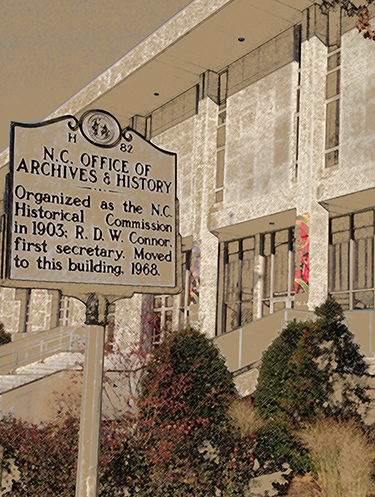Frank Leonard Stick (1884-1966) was born in Huron, Dakota Territory (now South Dakota)
to David Leonard and Lydia Jane Marcellus Stick. In 1899, Stick moved with his family
to the small mining town of Oglesby, Illinois, where his father operated a store owned
by the Bents Coal Mine Company. Stick worked at the store with his father and older
brother Claude. After two years of working as a stock and delivery boy, Stick had
greater aspirations, so he struck out on his own and moved to Wisconsin. He spent
the winter months trapping and the summer and fall as a hunting and fishing guide.
It was during this time that he began sketching.
By 1904, Frank Stick decided to rejoin his family, who had moved to Chicago, and enroll
in the Art Institute of Chicago. His instructors, impressed with his skill, suggested
he go to Wilmington, Delaware and study with Howard Pyle, founder of the Brandywine
School of Illustration. Pyle was a renowned and well-respected artist and illustrator.
It was during his studies in Wilmington, that Frank met Ada Maud Hayes, an artists'
model. Frank and Maud were both avid sportsmen who loved any activity that allowed
them to be outdoors. The couple married in 1908 and together, had two children, Charlotte
in 1909 and David, who would became a noted Outer Banks author, historian, and community
leader and philanthrapist, in 1919.
Over the next twenty years, Frank Stick's career as an illustrator flourished. His
artwork appeared on the front of calendars, book jackets, advertisements, and in publications
such as
Sports Afield,
Outdoor America,
Field and Stream, and
Leslie's Illustrated Weekly. In addition to his illustrating, Stick was also an author. He submitted articles
to many of the same magazines that ran his illustrations and in 1920, he co-authored
the book
The Call of the Surf with Van Campen Heilner, the first book written on surf fishing. By 1929, Stick became
disillusioned with the commercial art world. Tired of producing the same types of
images over and over again for a living, Stick put down his paint brushes and moved
his family to North Carolina's Outer Banks, an area he discovered while on a fishing
trip to Hatteras in the early 1920s.
After Frank Stick's visit to Cape Hatteras, he began to invest in real estate and
made land acquisitions with long-time friend and fellow artist Bill Koerner, and other
partners. Together, they created the Dare County Development Company and the sub-division
of Virginia Dare Shores. Stick continued these pursuits while moving his family to
the area, and after weathering the Great Depression became a real estate developer
and builder. One of Stick's many legacies to the heritage of the Outer Banks was the
construction of the flat top cottages in Kill Devil Hills and Southern Shores. Borrowing
design elements from the American Craftsman movement and his beloved Key West, Stick
built these homes with extended overhangs which helped to reflect heat and kept the
home's interior cooler during the summer. They were built with locally produced concrete
at a fraction of the cost, and in shorter time, than a traditional wooden beach cottage,
making them accessible to those of modest means.
Frank Stick was an ardent conservationist. He wanted to preserve both the natural
beauty and the historical treasures of the Outer Banks. He was the driving force behind
the creation of the Cape Hatteras National Seashore, and had a hand in establishing
the Wright Brothers National Memorial and Fort Raleigh National Historic Site. He
was also instrumental in the creation of the Virgin Islands National Park.
Later in life, in between his other activities, Frank Stick found time to pick up
his paint brushes again, though this time for pleasure instead of money. He continued
to paint the subjects and places he loved and tried his hand at sculpture. Frank Stick
illustrated two of the books authored by his son David,
The Graveyard of the Atlantic(UNC Press, 1952) and
The Outer Banks of North Carolina (UNC Press, 1958). He also began work on a series of fish paintings he intended to
use in a book on southern salt and freshwater fish. Though he had painted nearly 300
different fish species, he was unable to get them published before his death in 1966.
They were published posthumously in 1981 under the title
An Artist's Catch: Watercolors by Frank Stick. A definitive biography,
Frank Stick, Splendid Painter of the Out-of-Doors was published in 2004, authored by Michael F. Mordell.
